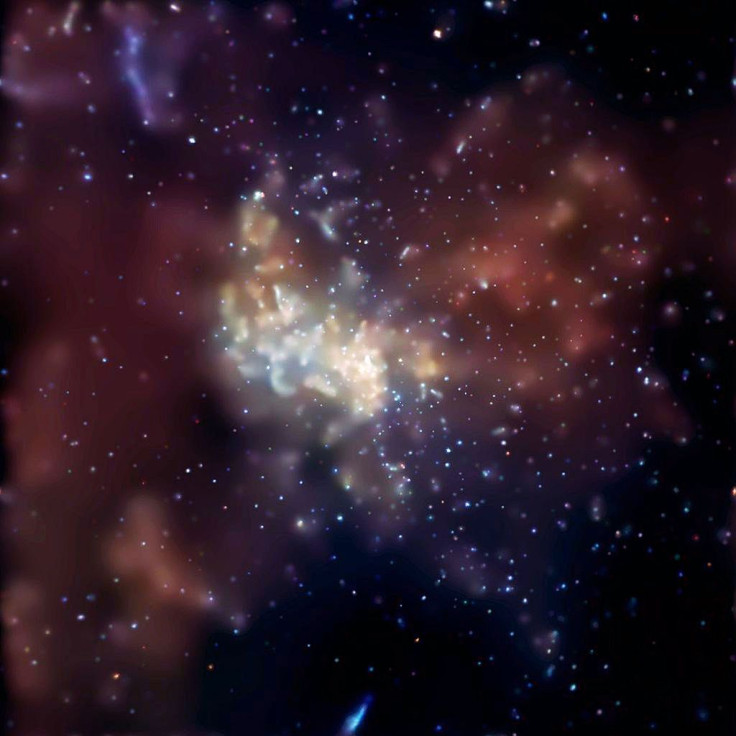NASA Captures Stunning Cosmic 'Teacup' 1.1 Billion Years Away [PHOTO]

NASA has captured a stunning cosmic structure called "Teacup" 1.1 billion years away.
On its official Twitter page, NASA shared a composite image of a teacup-shaped structure in the middle of a galaxy officially called SDSS 1430+1339. The image was created by combining data from the Hubble Space Telescope and Chandra X-ray Observatory.
The "cup" is actually a quasar, a supermassive black hole that continues to grow by pulling in matter and emits exceptionally large amounts of energy, according to NASA's website. The "handle," on the other hand, comprises optical and X-ray light surrounding a giant bubble.
Do you see the ☕ in this @chandraxray image?
— NASA (@NASA) March 17, 2019
Nicknamed the "Teacup," this object is about 1.1 billion light years away. The "handle" is a ring of optical and X-ray light, while the "cup" is a black hole known as a quasar. Details: https://t.co/8UiqGjrt2Y pic.twitter.com/6FpH4o0E4j
While it appears like the two parts of the Teacup are connected, they are actually 30,000 light-years away from each other. Astronomers theorized that the handle-shaped feature of the Teacup could have formed as a result of one of more eruptions powered by the black hole.
#News: Fancy a cup of cosmic tea? Calming chamomile this one is not! A galactic #storm is raging in a structure nicknamed the Teacup. Over a billion light years away, this #space tempest is powered by a type of actively growing black hole called a quasar! https://t.co/DRCpuv0lfZ pic.twitter.com/RZtfRw6xei
— Chandra Observatory (@chandraxray) March 14, 2019
Using data from the Sloan Digital Sky Survey, galaxy SDSS 1430+1339 was first discovered by citizen scientists as part of the Galaxy Zoo project back in 2007. Since its discovery, professional astronomers have used space-based telescopes to observe the galaxy, with the aim of calculating how turbulent it will become in the future.
Scientists previously believed that the Teacup's quasar might be starting to fade. Past observations showed that the atoms in the Teacup's handle-shaped feature were ionized, which occurs when particles become charged after being stripped of some of their electrons, likely due to the quasar's strong radiations in the past.
Astronomers compared the amount of radiation required to ionize the atoms and the amount they calculated of the quasar based on optical observations. They found that the quasar has dimmed by a factor of somewhere between 50 to 600 within the last 40,000 to 100,000 years.
However, the latest data from Chandra and ESA's XMM-Newton mission seem to contradict the theory that the quasar might be dying. According to a study published last year in The Astrophysical Journal, the quasar is heavily obscured by gas, based on the X-ray spectra, implying that it may actually be producing much more ionizing radiation than initially believed.
Instead of the previous estimates, the quasar's radiation production has decreased by a factor of 25 or less over the past 100,000 years, according to new data.
© Copyright IBTimes 2024. All rights reserved.





















